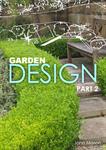Living In A Garden Pavilion
Create a living area beyond the house, sheltered from the wind, sun and rain – create your own garden pavilion. Garden pavilions have long been a feature of gardens from England to Asia.
They come in all sizes and shapes but they all fulfill the same purpose: a place to relax and unwind. And lets face it, relaxing and unwinding are two essential activities in the garden.
What to Put in a Garden Pavilion
Must haves…
- Comfortable seating …No. 1! Use armchairs, couches, day beds, and lots of cushions
- Tables or benches
- Clean flooring
Floor Covering options
Don’t overlook the importance of a comfortable, attractive floor. It can transform the pavilion into a valuable living area that can be used for relaxing and entertaining.
- Seagrass matting – inexpensive but must be fully protected from weather; can collect dust, animal hairs, etc.; has a short life span so be prepared to replace it after a few years
- Polished timber – natural and attractive appearance, durable and long-lasting. It can show up scratches and dents, though, and may need re-sanding and varnishing every 3-5 years.
- Tiles – practical, durable and easy to clean; attractiveness and cost varies
- Slate – expensive but attractive and durable; can be hard underfoot – floor rugs may be needed for increased comfort
- Linoleum – inexpensive, practical and easy to clean; not as attractive as natural materials
- Outdoor carpet (same as car carpets or artificial turf) – practical, comfortable surface; attractiveness depends on carpet quality and style.
Where to Put Your Garden Pavilion
A garden pavilion needs to be well positioned for two main reasons:
- To look its best when viewed from the garden. A pavilion that is hidden away in the corner of the garden can be a delightful discovery. Alternatively, you can make it a central feature of the garden, by placing it in the middle of the lawn with a path leading from the house.
- To provide the best possible views into the garden. It is important that the pavilion look out onto attractive features. Orient windows towards lush growth, garden ornaments and attractive buildings. Avoid views of bare fences and ugly buildings.
What Type of Construction?
A garden pavilion should be built to suit the climate. In England they are often solid stone buildings with double glazed windows; providing protection from the elements all year round, while maintaining lovely views into the garden. In the tropics they are more often open constructions, where the cooling breeze can blow through.
In some parts of temperate Australia it can be very cold in winter and very hot in summer. In this situation you need a solid structure that can keep out the cold, but with enough windows and other openings for ventilation during the hot weather.
Materials
The choice of materials should complement the style of the garden. Brick, stone, timber, even bamboo and steel can be used for a pavilion. Each has its own advantages and distinct appearance.
The Roof
Once you have decided on the material for your pavilion, it is worth giving some thought to the shape and materials you use for the roof. A pitched roof or a roof with a gable end can greatly enhance the appearance of the pavilion. Ceramic tiles or even wooden shingles can make for a stunning garden feature.
Windows And Doors
If you want views into the garden, you will have to provide plenty of windows. Full-length windows can be a great way of seeing your garden to best effect. Curtains, blinds, awnings and fly screens can be useful and decorative options.
A wide door-space will not only make the pavilion seem more welcoming and accessible, but it will improve light and ventilation inside. French and bifold doors are often used for this reason.
Optional Extras
Depending on where you are (and the climate) you may choose to include:
- Fly wire screens for insect protection
- Shade awnings
- Roll down blinds to block the rain or wind in adverse conditions
- Shelving
- Cupboards
- Electricity
- Lights
- Water
- Bar fridge
- Spa
- Sauna
- Pool table
- Table tennis
What do I use my Garden Pavilion for?
- Socialising with friends
- Reading
- Sleeping
- Studying
- Taking morning tea
- Playing with the kids
- Playing music (it can be a great spot to put the piano!)
 VISIT OUR ACS ONLINE E BOOKSTORE
VISIT OUR ACS ONLINE E BOOKSTORE
- Quality ebooks written by our staff
- Wide range of Horticulture titles by John Mason, author of over 40 gardening books, garden magazine editor, nurseryman, landscaper and principal of ACS.
- Ebooks can be purchased online and downloaded straight away.
- Read on an ipad, computer, iphone, reader or similar device.
- New titles published every month –bookmark and revisit this site regularly
- Download sample pages for free, to see what each book is like.
More from ACS
Ebook - Advice from professional horticulturists with decades in the industry.
View eBook
Ebook - Inspiring: covers formal, natural, eclectic, modern, oriental, Mediterranean; zoom in on stunning images and plans.
View eBook
Ebook - Explores garden design ideas and inspires
garden design and landscaping!
View eBook
Course - Popular design certificate that has launched many enthusiastic and talented design students into the industry.
View Course
Learn to work with wood; around the home, or at work.
View Course
Course - Buildings can enhance or inhibit good health. Let this course help you to understand better ways to live in and design buildings.
View Course